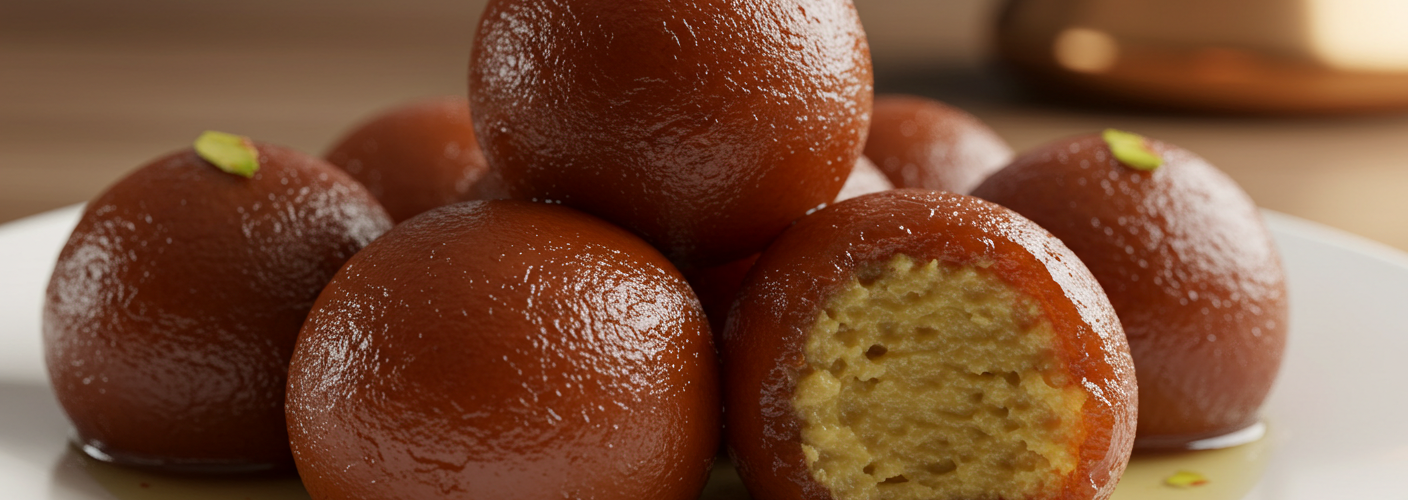For those who have a penchant for desserts, few treats evoke pure joy quite like Gulab Jamun. This iconic Indian sweet has secured its place in the hearts of many, transcending cultural and geographical boundaries with its rich flavor and alluring texture.
At its core, Gulab Jamun is a solid milk sweet, traditionally made from khoya, also known as mawa, which is evaporated milk. The process of making khoya is meticulous and can take hours, but the end result is a creamy base that forms the foundation of this delectable treat.
The preparation begins by kneading khoya with a hint of flour and sometimes a bit of baking soda to achieve the perfect consistency. Small balls are shaped from this mixture, which are then gently deep-fried until they attain a golden brown hue. This frying process is crucial; it ensures that the outer layer becomes crisp while the inside remains soft and melt-in-your-mouth tender.
Once fried, the balls are soaked in a rich syrup made of sugar, water, and flavored with cardamom, rose water, or sometimes saffron for an aromatic flourish. The syrup’s sweetness seeps into the Gulab Jamun, enhancing its flavor and making each bite an enchanting experience. This soaking process not only adds sweetness but also helps maintain the Gulab Jamun’s moistness, enabling it to remain delightful for several days if stored properly.
Gulab Jamun is more than just a dessert; it embodies a cultural significance that is often showcased during celebrations and festivals. Whether it’s Diwali, Eid, or a wedding, this sweet treat is a star on the menu. It often accompanies other assorted sweets, creating a delightful array of flavors that appeal to various taste buds.
When eating Gulab Jamun, the experience unfolds in layers. The initial crunch gives way to a soft, chewy interior, all while the syrup bath contributes a luxurious sweetness that lingers on the palate. Some enthusiasts prefer to savor Gulab Jamun warm, while others appreciate it chilled. Regardless of the temperature, the decadent charm of this dish remains intact.
For those new to Gulab Jamun, it’s worth noting that it is widely available in Indian restaurants and sweet shops around the world. However, there is something so rewarding about making it at home. With a little patience and love, you can create your own batch that caters to your personal taste. Plus, sharing homemade Gulab Jamun with family and friends adds to the joy of making this beloved dessert.
In recent years, many innovative variations have emerged. Chefs and home cooks alike are experimenting with unique ingredients, such as adding chocolate, or even using contemporary ingredients like coconut or nuts to create different textures and flavors. These adaptations showcase the versatility of Gulab Jamun and allow it to evolve while still celebrating the traditional essence that makes it so cherished.
In conclusion, Gulab Jamun stands as a testament to India’s rich culinary heritage, embodying tradition, celebration, and indulgence. Whether enjoyed during festivities or simply as a sweet treat after a meal, this solid milk sweet will undoubtedly continue to delight taste buds and spark joy for generations to come. So the next time you’re in the mood for something sweet, consider indulging in this magnificent dessert that has captured the hearts of many!




Add comment